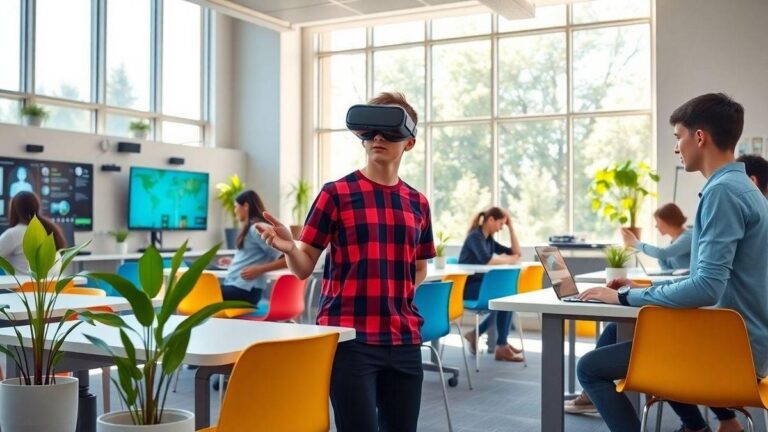Learn Faster: Proven Methods to Improve Memory can change the way you absorb information. In this article, you will explore effective memory techniques that boost your learning and help you secure that dream job. From mnemonic devices to the magic of spaced repetition, you’ll discover tools that make learning easier and more enjoyable. Plus, you’ll find tips on mindfulness and visualization to sharpen your focus and enhance your recall. Get ready to unlock your brain’s potential and step up your career game!
Learn Faster: Proven Methods to Improve Memory
In today’s fast-paced world, improving your memory is essential, especially if you’re looking to enhance your job prospects or secure a new position. Whether you’re a student, a professional, or someone looking to change careers, mastering effective memory techniques can give you the edge you need. Let’s dive into some proven methods that can help you learn faster and remember more.
Effective Memory Techniques for Learning Faster
Discover the Power of Mnemonic Devices
Have you ever struggled to remember a list of items or important information? Mnemonic devices can be your best friend. These simple tools help you recall complex information through easy-to-remember phrases or patterns.
For example, to remember the colors of the rainbow, you might use the acronym “ROYGBIV” (Red, Orange, Yellow, Green, Blue, Indigo, Violet). This technique simplifies recall without feeling overwhelmed.
Here’s a quick table to illustrate how mnemonics can work:
| Information to Remember | Mnemonic Device |
|---|---|
| Great Lakes | HOMES (Huron, Ontario, Michigan, Erie, Superior) |
| Planets of the Solar System | My Very Educated Mother Just Served Us Noodles (Mercury, Venus, Earth, Mars, Jupiter, Saturn, Uranus, Neptune) |
By creating these memory aids, you transform difficult-to-remember facts into something fun and engaging. So, don’t hesitate to get creative with your mnemonics!
How Spaced Repetition Boosts Information Retention
Spaced repetition is another powerful technique to enhance your memory. Instead of cramming information all at once, you space out your learning over time. This method reinforces what you’ve learned, making it easier to recall later.
Imagine you’re studying for a job interview. Instead of reviewing all the material in one night, spread your study sessions over several days. For instance:
- Day 1: Read and understand the key concepts.
- Day 3: Review the material briefly.
- Day 7: Test yourself on what you’ve learned.
- Day 14: Go over the information again.
By revisiting the material at spaced intervals, you’re more likely to retain the information long-term.
The Science Behind Memory Techniques
Understanding the science of memory can empower you in your learning journey. Memory is not just about rote memorization; it involves various processes in the brain.
When you learn something new, your brain forms connections between neurons. The more you practice recalling information, the stronger these connections become. This is why techniques like mnemonics and spaced repetition are effective—they help you create and reinforce these neural pathways.
Research shows that actively engaging with the material, rather than passively reading, leads to better retention. So, take the time to engage with the content, quiz yourself, and teach others what you’ve learned!
Cognitive Enhancement Strategies to Improve Your Skills
Brain Training Exercises You Can Start Today
To sharpen your memory, consider incorporating brain training exercises into your daily routine. These activities stimulate your mind and can improve cognitive function. Here are some fun and effective exercises you can try:
- Puzzles: Sudoku, crosswords, and jigsaw puzzles challenge your brain and enhance problem-solving skills.
- Memory Games: Play games like Concentration or Memory Match to boost your recall abilities.
- Learning a New Language: This not only expands your vocabulary but also keeps your brain active and engaged.
By dedicating just a few minutes each day to these exercises, you can significantly impact your memory and overall cognitive abilities.
The Role of Neuroplasticity in Learning Faster
Neuroplasticity is the brain’s ability to reorganize itself by forming new neural connections. This remarkable feature means that you can improve your memory and learning capabilities at any age.
When you challenge yourself with new experiences or information, your brain adapts and evolves. This is why learning new skills or taking on new challenges can lead to improved memory.
For instance, if you’re looking to enhance your job skills, consider taking an online course in a field that interests you. As you learn, your brain will create new pathways, making it easier to retain and recall information.
Unlocking Your Brain’s Potential Through Practice
Practice is key to unlocking your brain’s potential. The more you engage with the material, the better you will remember it. Here are some practical tips to enhance your practice sessions:
- Set Specific Goals: Define what you want to achieve in each session. For example, aim to memorize a certain number of terms or complete a chapter.
- Use Different Learning Styles: Incorporate visual, auditory, and kinesthetic learning methods to reinforce your understanding.
- Stay Consistent: Regular practice is crucial. Try to dedicate time each day to focus on your learning goals.
By following these strategies, you can significantly boost your memory and enhance your learning experience.
Mindfulness and Visualization for Better Learning
Using Mindfulness Meditation to Enhance Focus
In the hustle and bustle of life, it’s easy to become distracted. Mindfulness meditation can help you regain focus and improve your memory. This practice encourages you to stay present and aware, which is essential for effective learning.
Start by setting aside a few minutes each day for mindfulness meditation. Find a quiet space, close your eyes, and focus on your breathing. If your mind wanders, gently bring your attention back to your breath. This simple practice can enhance your concentration and clarity, making it easier to absorb information.
Visualization Strategies for Improved Memory Recall
Visualization is another powerful tool for enhancing memory. When you visualize information, you create mental images that help you remember better.
For example, if you’re trying to remember a presentation, picture yourself giving it confidently. Imagine the audience’s reactions and the key points you want to convey. This mental rehearsal can improve your recall during the actual presentation.
Here’s a quick visualization exercise you can try:
- Choose a Topic: Select a subject you want to learn about.
- Create a Mental Map: Visualize the key concepts as branches of a tree.
- Add Details: Fill in each branch with relevant information, creating a vivid mental image.
By using visualization techniques, you can make learning more engaging and memorable.
Techniques to Combine Mindfulness and Visualization
Combining mindfulness and visualization can take your learning to the next level. Here’s how you can integrate both techniques:
- Mindful Visualization: While meditating, focus on a specific goal or piece of information you want to remember. Visualize it clearly in your mind.
- Breathing and Imagery: As you breathe deeply, imagine each breath bringing clarity and focus to your learning process.
- Reflective Practice: After studying, take a moment to reflect on what you’ve learned. Visualize how you will apply this knowledge in real-life situations.
By merging these techniques, you can enhance your focus, retention, and overall learning experience.



